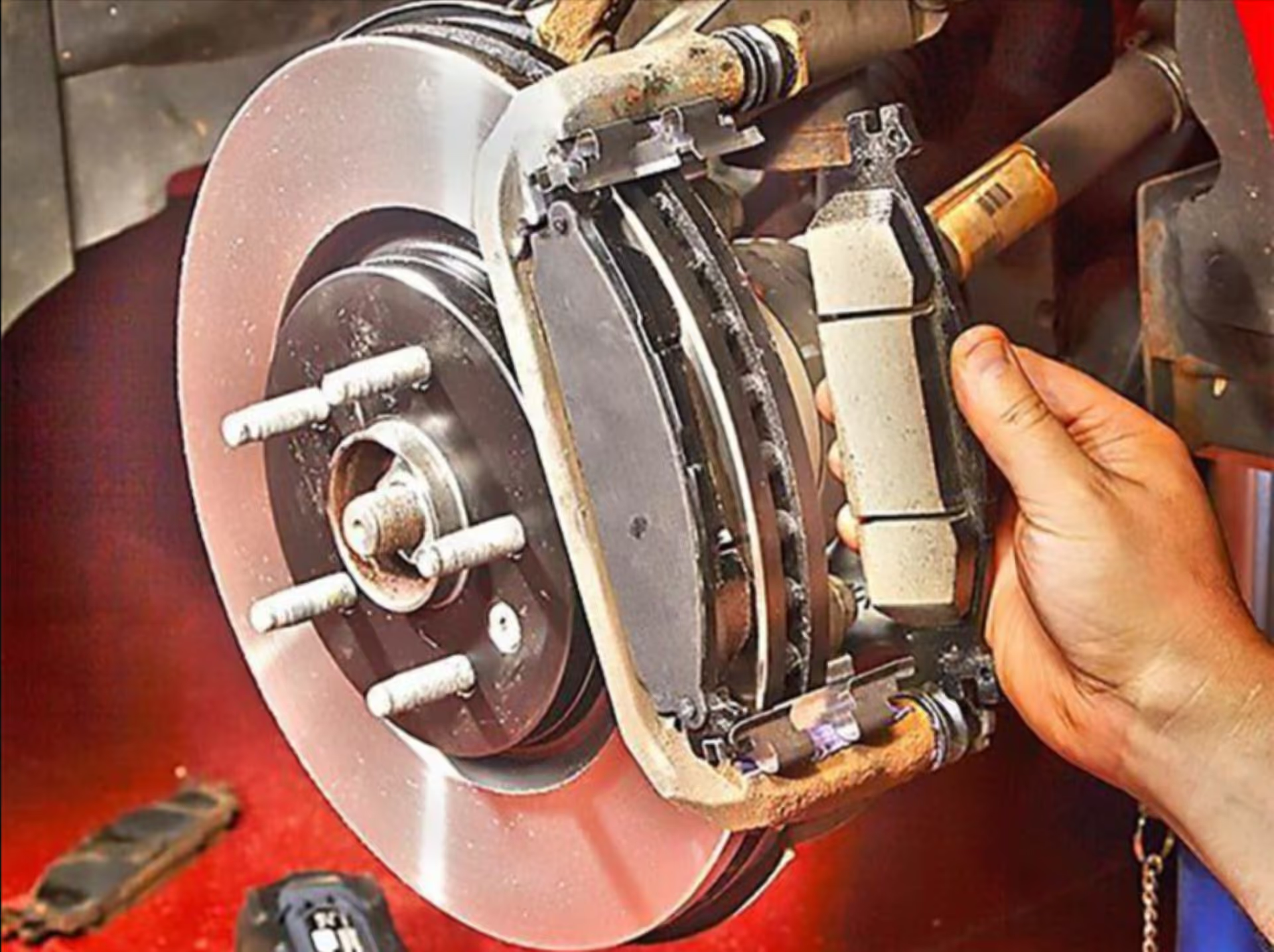
The diesel engine is one of the most important parts of your heavy-duty truck. It gives your vehicle the power to tow, haul, and carry heavy loads over long distances. But like any other system, it needs regular care to stay in good shape.
Cleaning your diesel engine is a smart way to boost fuel efficiency, reduce wear, and help your truck run better for longer. When dirt, oil, and grime build up, they can affect performance and lead to costly damage. That’s why routine cleaning should be part of your maintenance plan.
In this guide, you’ll learn how to clean your diesel engine yourself (DIY) using simple and practical steps. You don’t need to be an expert to follow along—just a bit of time, the right tools, and a commitment to keeping your truck in top condition.
Let’s dive in and give your engine the care it deserves.
Why is it Essential to Clean Your Heavy-Duty Truck Engine?
A diesel engine has a long life span and needs to be cleaned and maintained regularly to ensure it performs its duties well.
As a fleet manager, truck driver, or truck owner, include engine cleaning in your truck maintenance checklist to ensure routine engine inspection and cleaning for optimum performance.
Here are other reasons why you should clean your big rig’s diesel engine.
- To remove contaminants that may cause fire explosions, increase carbon emissions, and even wear and tear your engine.
- Regularly cleaning your engine can spot leaks, damage, and other potential issues and fix them early before they escalate.
- A clean engine will improve air circulation in your engine and increase fuel efficiency.
- Moreover, you can also remove grease, carbon deposits, and other debris that might clog your engine and reduce its effectiveness.
- Lastly, a clean and well-maintained engine will increase the value of your truck when you sell it.
Tools and Products You Need to Prepare Before the Actual Engine Cleaning
Before cleaning your diesel engine, ensure you check with your engine manufacturer for any specific recommendations.
Moreover, ensure you have the following tools and equipment ready to ensure your safety and an effective cleaning process.
You need protective eyewear, a mask to cover your eyes and nose, and gloves to protect your hands from unexpected injury and stains.
- A fuel transfer pump and a container to store the old fuel.
- A brush to remove stuck carbon and debris.
- You also need a foam-based engine cleaner to loosen the grime and oil deposits.
- Diesel fuel additives. This product contains dispersants, detergents, and corrosion inhibitors that will clean and protect your engine from damage.
- A diesel injector cleaning kit. This kit has a solution to dislodge and clean carbon deposits from the fuel system.
- Water to rinse off your engine after cleaning it.
A Step-by-Step Guide to Cleaning Your 18-Wheeler Engine
Step 1: Prepare the Cleaning Area
Park your truck in a well-ventilated area away from flammable substances. You can also lay a mat underneath your vehicle to collect debris and prevent the oil and other substances from staining the area.
Step 2: Warm up Your Engine
Ignite your truck engine and allow it to run for 5 to 10 minutes. This will help release and melt the oil and grease in the engine area, making it easy to remove when cleaning.
Step 3: Disconnect the Battery
After warming up your truck, disconnect the negative terminal of its battery to prevent electrical current from flowing to the other parts of the vehicle.
Disconnecting the battery when cleaning the engine protects you from accidental electrical shocks, short circuits, and damage to your truck’s electrical components.
Step 4: Prepare the Engine.
Before opening the engine, remove all the loose debris from and around the engine bay. You can also use an air compressor or a brush to remove all the dust and other contaminants.
Cover air passages and sensitive parts with tape, a plastic bag, a sheet, or aluminum foil. This will help keep them dry and clean during cleaning and avoid damage.
Step 5: Disassemble Your Diesel Engine
Ensure your truck engine has cooled before disassembling it to avoid burns.
If you cannot remember which part connects where take pictures at every step of dismantling the engine. The pictures will help you reassemble the engine and ensure every part is connected correctly.
Step 6: Spread Your Cleaning Agent
Spread the cleaning agent with a brush or a sprayer to ensure it gets on every surface of your engine.
Allow it to settle for a few minutes to dissolve and remove oil, grease, carbon deposits, and other contaminants.
Use the right cleaning agent in the right amount as directed by the manufacturer. This will ensure that the components of your diesel engine are in the proper condition, perform their functions well, and last longer.
Step 7: Scrub the Engine
Use a soft brush with a long handle or a used toothbrush to scrub the engine's surface in circular motions to remove stubborn carbon deposits, dirt, and grime.
Do not apply pressure when scrubbing to avoid damaging the sensitive parts of your diesel engine, and ensure the covered parts are still intact when scrubbing.
Step 8: Rinse Your Diesel Engine
After scrubbing your engine, it's time to rinse it to remove the cleaning agent and grit.
When rinsing your diesel truck engine, use gentle, flowing water. Avoid using pressure washers and water from a high-pressure unit, as these may damage the sensitive parts of the engine.
Step 9: Inspect and Dry the Engine
Inspect your engine after rinsing to ensure all the oil, grease, and carbon deposits are out to prevent it from future damage.
Carefully dry your engine with an air compressor or dry and clean cloth to remove all the moisture.
Step 10: Reassemble the Engine
After you have dried and assessed the engine, it's time to assemble the parts. Use the pictures you took early to connect every part correctly.
Uncover the electrical and sensitive parts and connect your battery. Then, test your truck to ensure it is working correctly.
If you note any issue with your diesel engine, contact an experienced diesel truck mechanic to fix it.
Key Takeaways
Taking care of your diesel engine is crucial for keeping your vehicle running smoothly and efficiently. By maintaining it properly and regularly cleaning the engine to remove impurities, you can ensure it stays in great shape for the long haul. This thoughtful maintenance will help prevent costly repairs and keep your vehicle performing at its best.
Frequently Asked Questions (FAQs)
1. How Often Should I Clean My Diesel Engine?
The number of times you should clean your truck engine will depend on the cleaning you want to perform and the mileage your truck covers.
You should service your engine after your truck has covered 5,000 km or after 6 months. Do so to remove carbon debris from the engine after your vehicle has covered 18,000 miles. The frequency of oil changes will depend on the number of miles covered.
2. What are Some Signs That My Diesel Engine Needs to be Cleaned?
When you realize your engine is burning more fuel than usual, excessive black or grey smoke from your truck’s exhaust system, decreased power output, the engine failing to start, or some premature wear and tears are indicators of a dirty engine.
3. Can I Clean the Diesel Engine Myself?
You can clean your truck's diesel engine system without needing a mechanic or visiting a nearby truck repair shop. Ensure you have all the recommended products and use your truck manufacturer's Do-It-Yourself (DIY) guide to ensure your engine is in good condition and operates well.
4. What Precautionary Measures Should I Put in Place When Cleaning My Truck Engine?
Use protective wear to cover your face and hands to protect yourself from harmful products and any injuries, disconnect the battery to ensure there is no power flow to other parts of the truck, cover the alternator, air passages, distributor, fuse box, and other sensitive parts before cleaning the engine, apply the degreaser as recommended by the manufacturer, avoid using pressure washers or water from high-pressure sources to rinse the degreaser, when drying your engine ensure your engine is dry. All the moisture is dried, and finally, you must dispose of the cleaning agents and rinse the area thoroughly to keep the environment clean.
“Being a mobile mechanic allows me to earn significantly more than I would in a traditional garage setting. The convenience I provide to customers, coupled with the lower overhead costs, means I can charge a premium for my services and keep a larger share of my earnings.”







